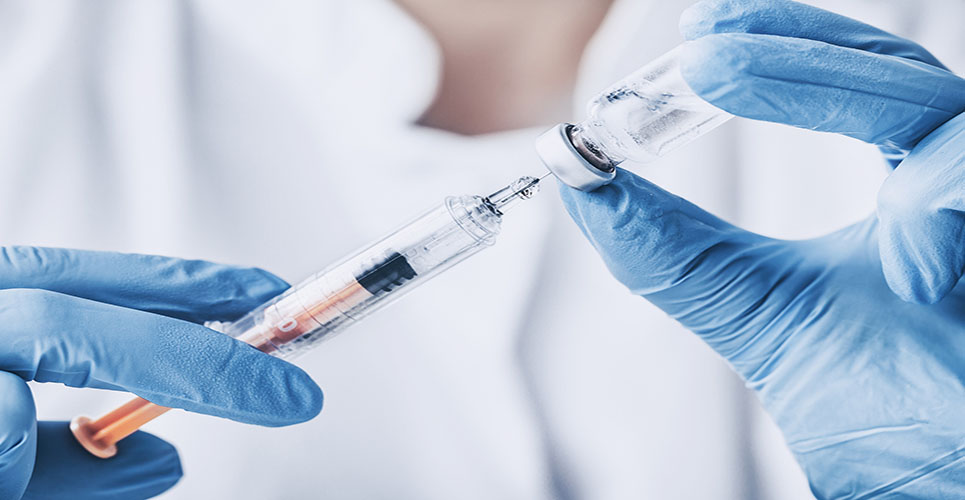teaser
Novartis has announced that the US Food and Drug Administration (FDA) approved the use of Flucelvax® (Influenza Virus Vaccine), the first cell-culture-derived vaccine, for individuals 18 years of age and older.[3]
Flucelvax utilises full-scale cell-culture manufacturing technology, an alternative production method to traditional egg-based production.[1] Cell-culture technology utilises a well-characterised mammalian cell line rather than chicken eggs to grow virus strains.[2]
The production occurs in a closed, sterile, controlled environment, which significantly reduces the risk of potential impurities. Flucelvax does not contain any preservatives, such as thimerosal, or antibiotics.[2]
Cell-culture technology enables rapid response to urgent public health needs such as a pandemic within weeks.[1] Traditional influenza vaccine production depends on a large number of fertilised chicken eggs to grow virus strains and requires many months for organisation of egg supplies, virus incubation and actual production before the vaccine is delivered to physicians or pharmacies.[4] Cell-culture technology is successfully used to manufacture other vaccines, including those distributed during the H1N1 pandemic, as well as vaccines for polio, rubella and hepatitis A.[5,6]
“The approval of Flucelvax is an important milestone for our influenza franchise and brings an innovative vaccine to the US,” said Andrin Oswald, Division Head, Novartis Vaccines and Diagnostics. “Modern cell-culture technology will likely become the new standard for influenza vaccine production and we are proud to lead the way.”
Novartis has partnered with the US Department of Health and Human Services, Biomedical Advanced Research and Development Authority (HHS, BARDA) for the development of the cell-culture manufacturing technology, as well as for construction of the state-of-the-art facility in Holly Springs, N.C. Total public/private investment in the technology development and facility is more than $1 billion.[1] Flucelvax will be produced in Holly Springs once the facility is ready for full-scale commercial production. The facility is the first of its kind in the US and also allows for enhanced domestic pandemic preparedness.[1]
“The availability of a cell-culture vaccine is an important step to ensuring our readiness for seasonal influenza, as well as a potential pandemic,” said Dr. William Schaffner, professor of medicine and chairman of preventive medicine at Vanderbilt University, Nashville, Tennessee. “Annual influenza vaccination is an important public health measure that helps protect thousands of people from illness and death each year.”
References
1 U.S. Department of Health and Human Services. “HHS Awards Contracts Totaling More Than $1 Billion to Develop Cell-Based Influenza Vaccine.” 2006 Available at: http://archive.hhs.gov/news/press/2006pres/20060504.html.
2 Ambrozaitis, Arvydas et al. A novel mammalian cell-culture technique for consistent production of a well-tolerated and immunogenic trivalent subunit influenza vaccine. Vaccine. Vol 27. Issue 43. October 9, 2009: 6022-6029. Available at: http://www.sciencedirect.com/science/article/pii/
S0264410X09011177. Accessed on October 3, 2012.
3 Flucelvax Package Insert. 2012.
4 Gerdil, Catherine. “The Annual Production Cycle for Influenza Vaccine.” Vaccine 21 (2003): 1776-1779.
5 World Health Organization. “Production and Availability of Pandemic (H1N1) 2009 Vaccines.” 2009. Available at: http://www.who.int/csr/disease/swineflu/frequently_
asked_questions/vaccine_preparedness/production_
availability/en/index.html. Accessed October 2012.
6 U.S. Food and Drug Administration. “Guidance for Industry:
Characterization and Qualification of Cell Substrates and Other Biological Materials Used in the Production of Viral Vaccines for Infectious Disease Indications.” 2010. Available at: http://www.fda.gov/downloads/biologicsbloodvaccines/
guidancecomplianceregulatoryinformation/
guidances/vaccines/ucm202439.pdf. Accessed October 2, 2012.

